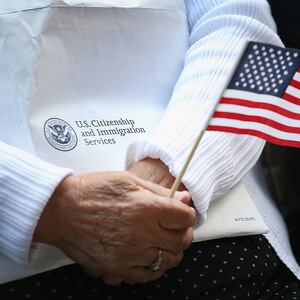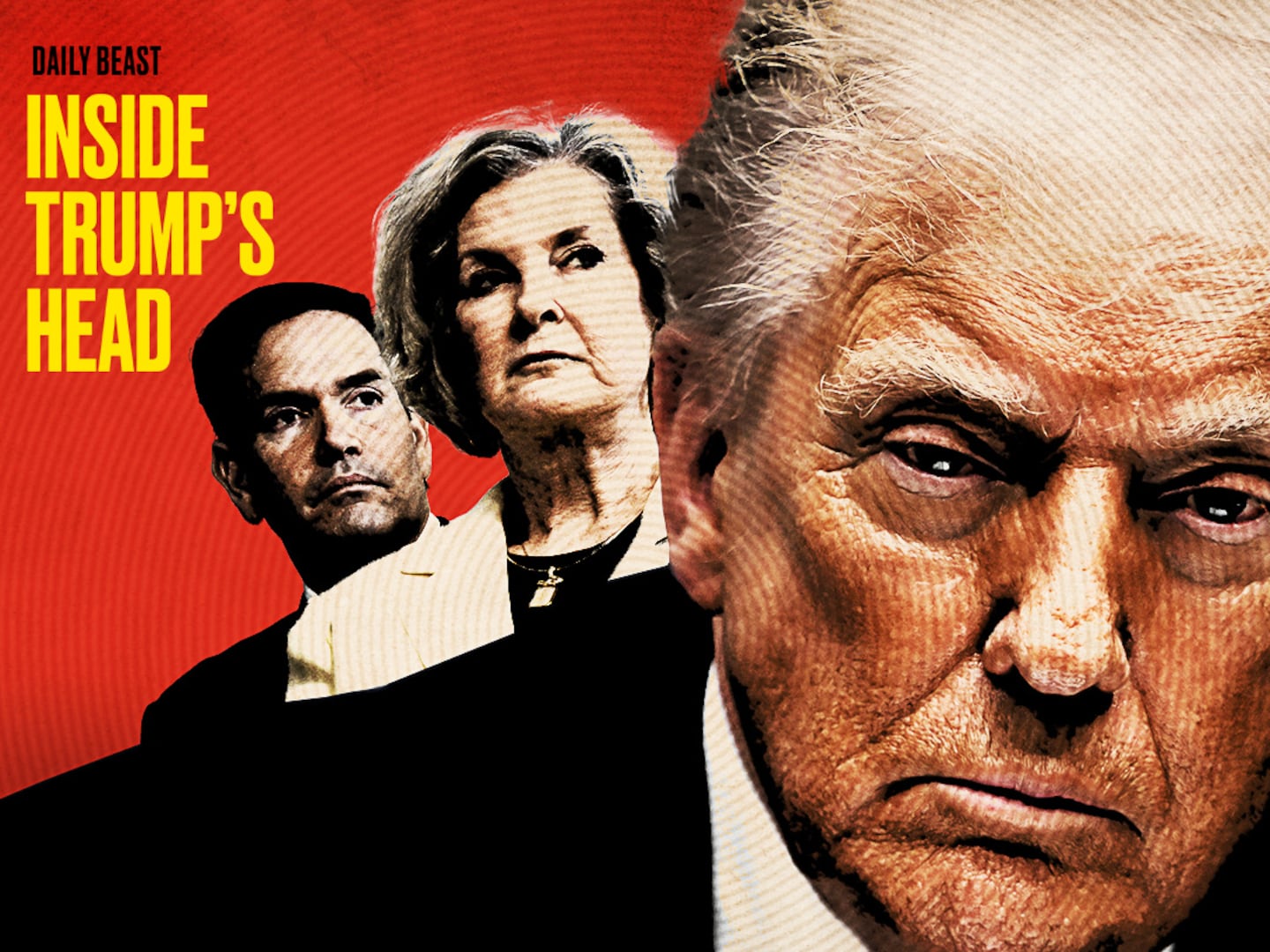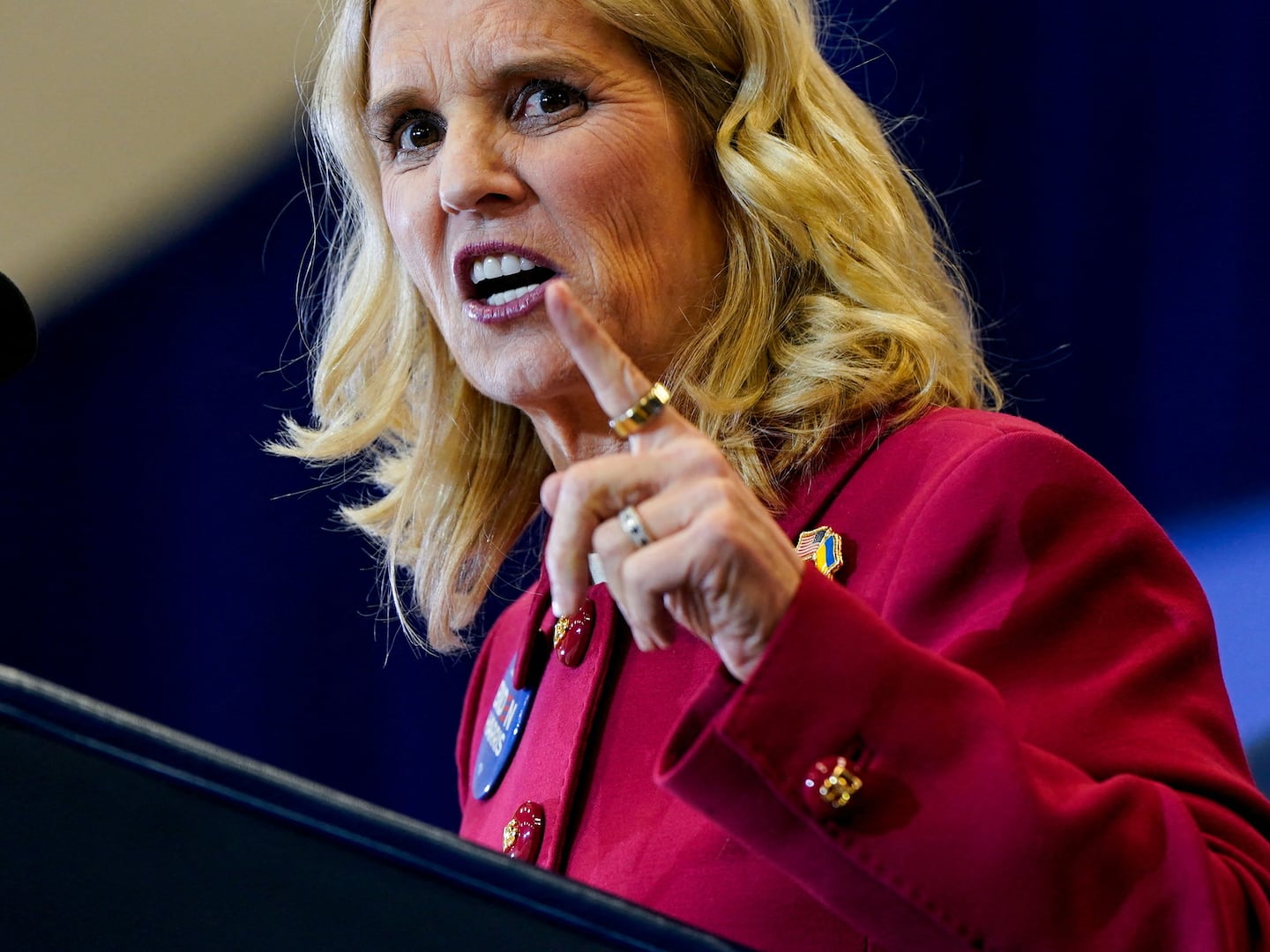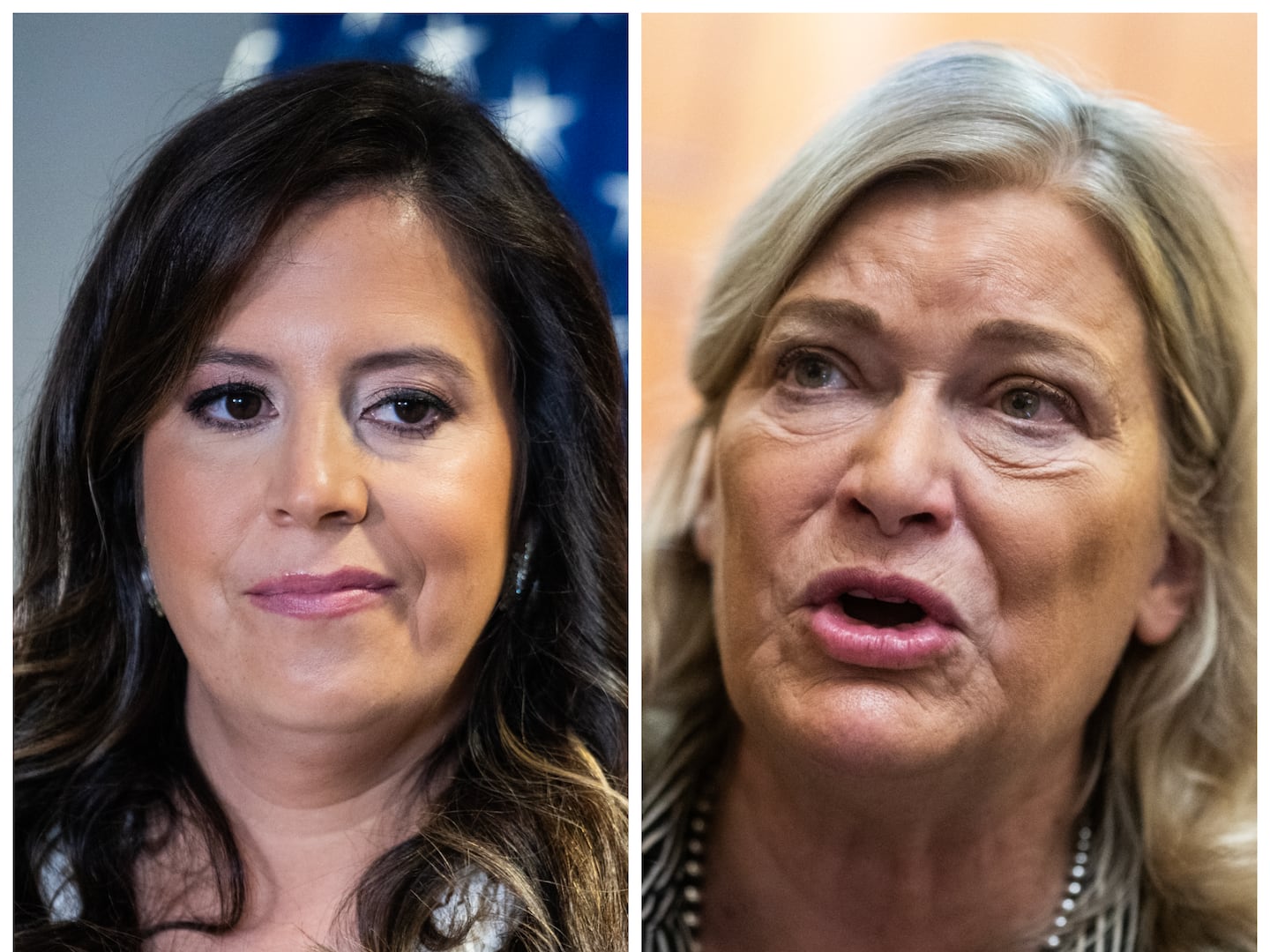After weeks of what President Joe Biden might dub “mistakes in the communication” on where the White House stands on one of the most critical provisions in the government’s guidelines for reopening public schools, the administration is finally in sync with scientific experts on vaccinations for teachers.
But while most teachers’ unions and rank-and-file educators support the guidelines, some teachers say that the Centers for Disease Control and Prevention’s recommendations on vaccinations don’t always account for conditions on the ground—and that agreement on the theory doesn’t mean much if there’s no money to put that theory into practice.
“If you want to do the CDC recommendations around physical distancing, you probably need to hire more educators, and you probably need to pay for doubling the amount of school buses, you might need to double the number of bus drivers,” said Andrew Crook, national press secretary for the American Federation of Teachers, the nation’s second-largest labor union for teachers. “And that costs money.”
“State and local leaders cannot pick and choose which guidelines to follow and which students get resources to keep them safe,” said Becky Pringle, president of the National Education Association, the largest labor union in the country. “And too many schools do not have in place the basic protections that the CDC has said are universally required.”
The push and pull is between teachers who say that the CDC’s guidelines need funding to back them up, and newly budget-conscious Republicans who have accused Biden of listening to unions instead of scientists—even though many of them have indicated that they’re not interested in funding initiatives that scientists say are necessary for safe reopening.
Since the first days of the coronavirus pandemic, which has claimed nearly 500,000 lives in the United States since last winter, Biden has committed to centering his response to the crisis on the consensus of the nation’s leading doctors, epidemiologists and disease scientists.
"Our national strategy is comprehensive—it’s based on science, not politics. It’s based on truth, not denial,” Biden said during remarks on the pandemic during his first full day in office, when he announced a slew of executive actions aimed at helping address the pandemic. Scientists, he promised, would “work free from political interference,” allowed to make recommendations based on “science and health alone, not what the political consequences are.”
Biden’s “listen to the science” catchphrase was, in part, intended to contrast his pandemic response to that of his predecessor in the Oval Office, whose persistent—and occasionally ludicrous—hostility to the basic tenets of science were criticized by health experts as exacerbating the pandemic’s effects. The Biden administration, however, has been wobbly on that commitment in recent weeks on the issue of reopening schools.
Two weeks ago, Dr. Rochelle Walensky, director of the CDC, indicated that upcoming guidance on school reopening would allow for kids to return to in-person instruction without mandatory vaccinations for educators. Walensky’s comments kickstarted a weeks-long pushmi-pullyu over vaccinations for teachers, with White House press secretary Jen Psaki saying that Walensky was speaking in her personal capacity and Vice President Kamala Harris repeatedly dodging questions on The Today Show about whether teachers were safe without vaccinations.
Eventually, Psaki cleared up the confusion—“Neither the president nor the vice president believe it is a requirement… to reopen schools, but we believe that teachers should be prioritized,” she told reporters on Tuesday—but Republicans, never close to teacher’s unions to begin with, have attempted to use the waffling as proof that the administration is kowtowing to teachers instead of scientific consensus.
“The shifting positions and contradictory statements from the Biden administration concern us because parents need certainty,” Rep. Cathy McMorris Rodgers, the top Republican on the House Committee on Energy and Commerce, wrote in a letter to the administration, released on Thursday. In the letter, co-signed by Reps. H. Morgan Griffith (R-VA) and Brett Guthrie (R-KY), top Republicans on the committee’s oversight and health subcommittees, respectively, Rodgers said that the party is growing concerned that “politics may be overtaking science in the Biden administration,” leading to “unnecessary, prolonged school closures.”
That talking point is similar to those launched by other Republicans on Capitol Hill and elsewhere throughout the country who say the CDC’s new school guidelines create too many barriers for reopening. Gov. Ron DeSantis in Florida and other public-leaning Republican officials have said the agency’s own science—science to which the Biden team promised to listen—suggests that transmission in schools is low and that schools should reopen immediately.
Those officials say union pressure is to blame.
“I think you could say there were two promises that the Biden team —driven by the scientists and unity—and the school example calls into question whether they are going to follow the science and data or special interests,” one former senior Trump official said.
In announcing the new guidelines, Walensky recognized transmission in schools was low but said local jurisdictions should implement stringent social distancing and universal mask wearing when community transmission was high.
“If levels of community transmission rise into high levels, as is currently the case in over 90 percent of our counties, schools should require physical distancing of at least six feet, and reduce sports and other extracurricular activities,” Walensky said during a briefing with reporters last week, adding that the agency was “not mandating that schools reopen.” Walensky said schools in high-transmission areas should consider adopting a hybrid-learning model.
“If we are at such high levels of transmission, we are advocating for, perhaps, more virtual instruction. And then, if impossible, to do the six feet distancing,” she said.
The guidelines released last week are not drastically different from the ones issued in the Trump administration in July. Those guidelines, outlined by former CDC Director Robert Redfield, also suggested students stay six feet apart from one another and that schools in communities with high transmission consider staying closed.
Walensky told reporters Wednesday that she knows “not everybody is happy” with the CDC’s school guidance recommendations.
“I sleep at night because I know it was science-based,” Walensky told reporters during a press conference Wednesday.
“One thing that I think is not well understood is that any activity has some level of risk. But there's also definite harm in keeping schools closed. And those harms are educational. We know that poor kids are much less likely to be able to successfully progress from distance learning,” said Tom Frieden, the former director of the CDC under the Obama administration. “There are many important reasons to keep schools open. But it also has to be done safely in a way that is supportive of teachers and staff and addresses concerns. You'll never get to a perfect situation where you have everybody vaccinated and wonderful ventilation between every pupil and every student. It is just not going to happen. But we need to do everything possible.”
Both the NEA and the AFT back the current guidelines, as do most of the major state chapters. Most educators are willing to head back to in-person education, according to membership surveys, as long as teachers are given priority in receiving vaccines and other safety measures are put in place. According to an AFT survey, teachers place vaccinating school staff only behind mandating the use of masks in schools as the most important criterion for safely reopening schools, and nearly two out of three teachers say that prioritizing instructor vaccination is essential in order to reopen schools.
Part of that, Crook said, is an understanding that many schools are already back open, to one degree or another.
“A lot of the teachers are back,” Crook said. “It’d be weird to have a mandate when you’ve got 65 percent of schools already offering in-person instruction—that doesn’t make sense. What would you do, take teachers out of the classroom who are already back in the classroom until they got the vaccine?”
But there are local unions that have called for universal vaccinations for teachers before full in-person instruction returns. Those calls largely come from education associations in localities dealing with intense outbreaks, or in states where authorities haven’t prioritized educators for vaccinations while still insisting on sending kids back to the classroom full time.
“Educators cannot support a broad physical reopening of schools until school staff required to work in person have access to vaccinations, L.A. County is out of the purple tier and reaches much lower community transmission rate, and all schools have strict multi-layered mitigation strategies in place—such as COVID testing, physical distancing, use of masks, hand hygiene, and isolation/quarantine procedures,” Cecily Myart-Cruz, president of United Teachers Los Angeles, said on Tuesday, after Los Angeles County reached California’s revised guidelines for reopening elementary schools.
AFT has backed up the Los Angeles teacher’s union, Crook said, because of the dire conditions on the ground in Los Angeles.
“It's not really in the red—it’s in the purple zone,” Crook said, using the shorthand for California’s color-coded tracking system to denote community spread of the coronavirus, in which purple indicates the most severe spread. “In that district, which is a majority Latino district, the number of multi-generational households and kind of infection rates—kids that go to LAUSD schools have just been on the front line of that… I think that’s why you had people like the superintendent saying, well, we actually need the vaccine to be a prerequisite.”
The bigger concern among education unions isn’t so much the substance of the guidelines as much as whether Congress will provide the funding to make them happen. Most unions say that they’re fully in support of the Biden administration‘s “priority but not prerequisite” guidelines on vaccinations for teachers in most circumstances— provided the government funds expanded testing, more socially distant teaching environments, and modernizing antiquated ventilation systems.
“When you have all those things in place, then let’s get everybody in school—let’s have face-to-face instruction, and the vaccination then will just be one of those things that will help assure us and keep us more comfortable,” said Ron Martin, a middle school social studies teacher in Eau Claire, Wisconsin, and president of the Wisconsin Education Association Council. “But if we can’t do those other things, then we absolutely have to have the vaccination for a good majority of our educators.”
Martin said that passage of the American Rescue Plan, Biden’s $1.9 trillion stimulus package that includes $130 billion earmarked for safely reopening schools, is critical to those plans—but that in the meantime, the actions of state and local officials are doing more to hamper safe in-person instruction than unions.
“In Wisconsin, our state legislature doesn’t seem to think that wearing a mask will help mitigate the transmission of COVID,” Martin said. “Then the CDC and everyone else is telling us that masks are necessary—and it’s not just for our schools but our communities—we have to make sure that that’s in place.”
--with additional reporting by Erin Banco








